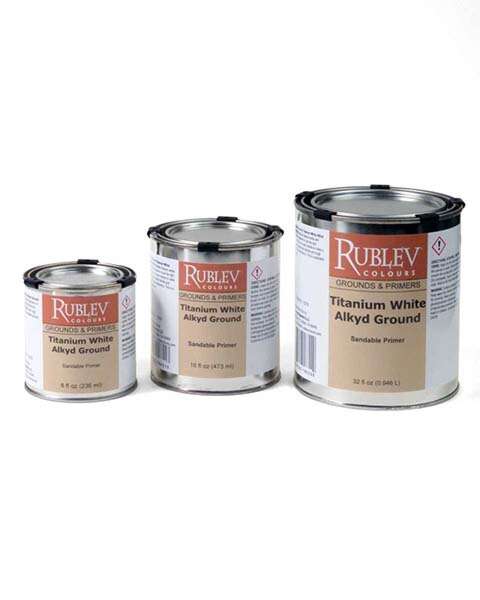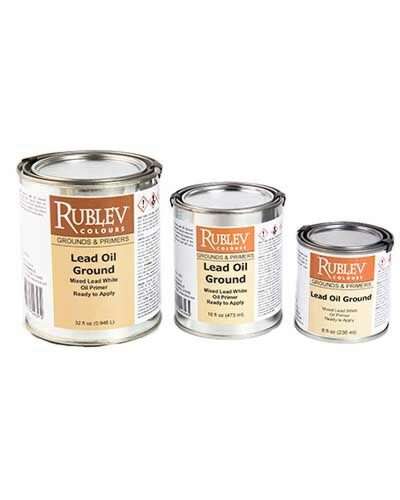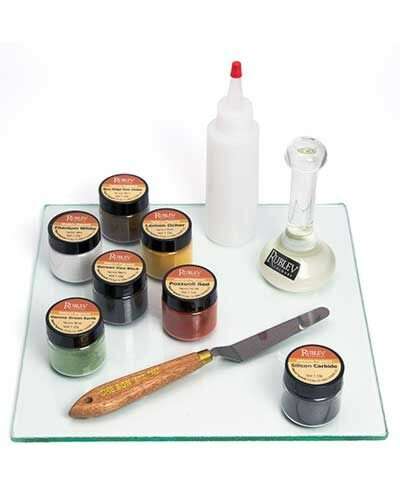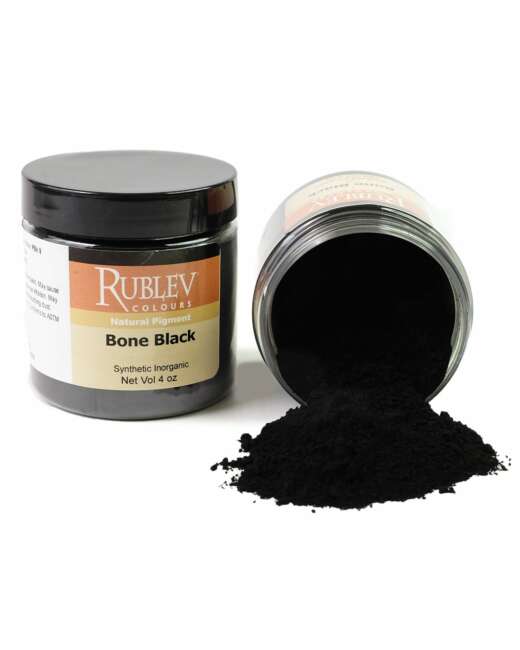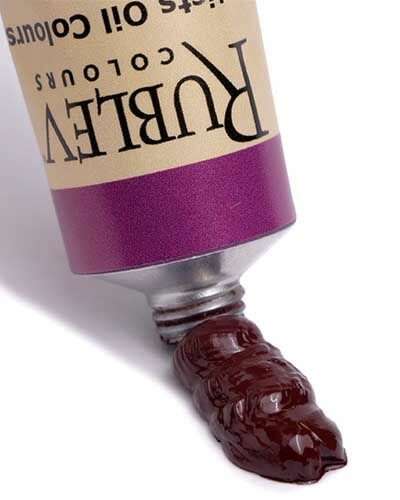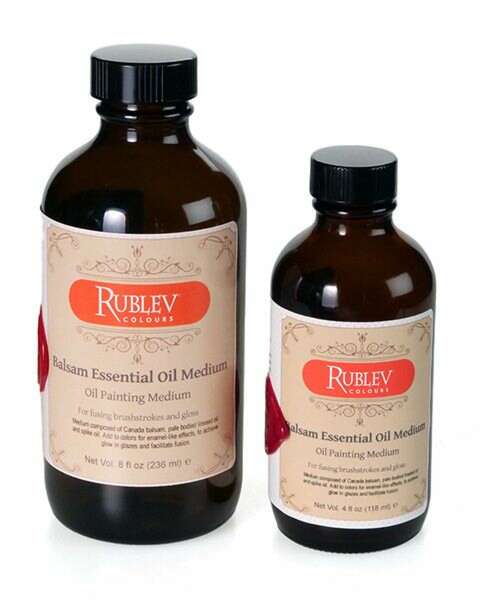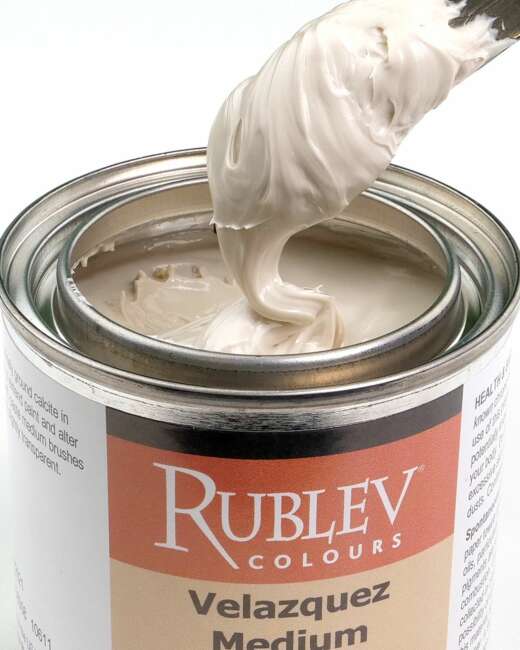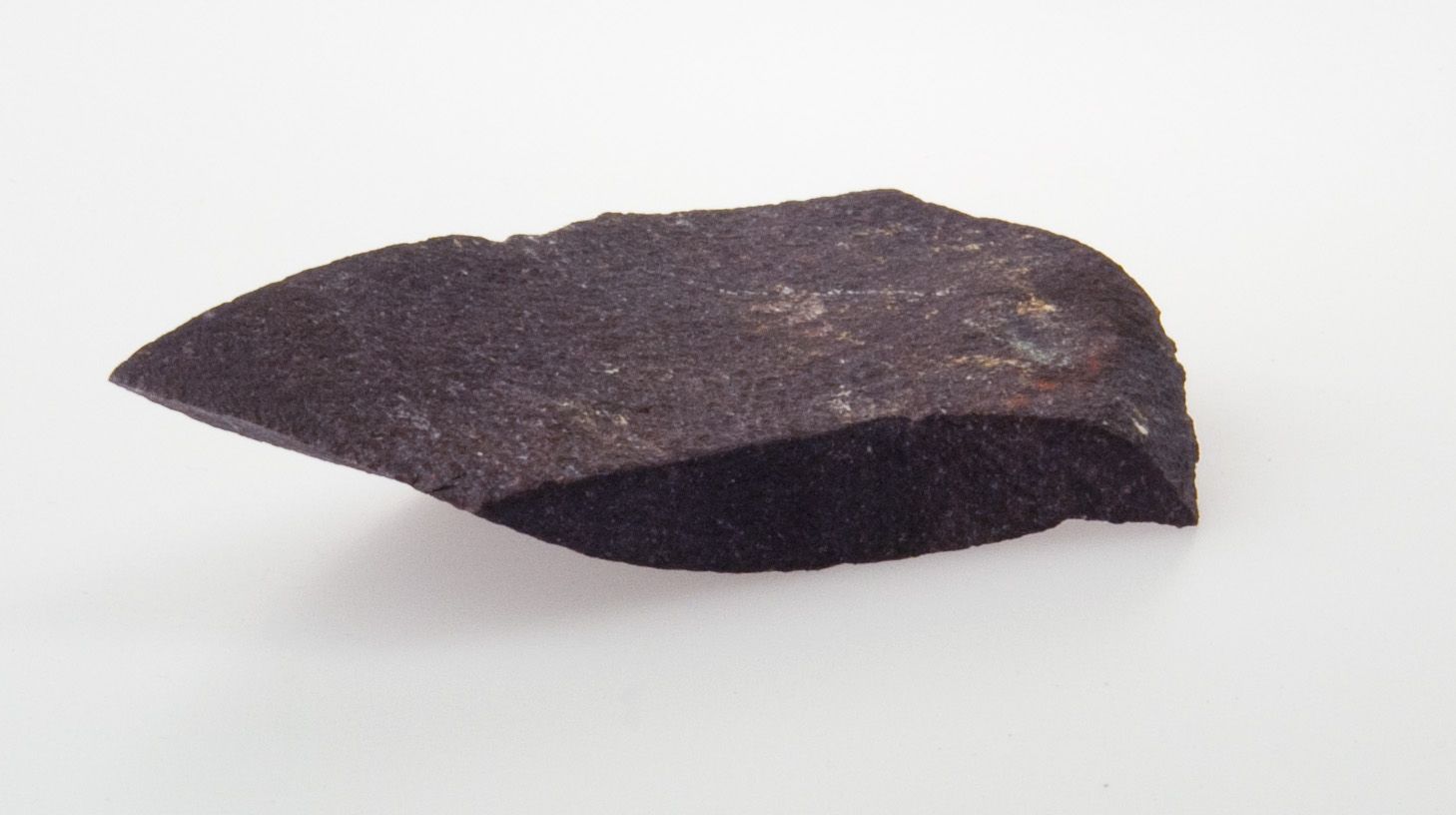
Ocher is a natural iron oxide earth found in many parts of the world. They are among the most lightfast and stable pigments used in the arts. Iron oxide pigments produce a wide range of colors, from black through shades of purple and red in the anhydrous oxides to yellow, orange, and brown in the oxide hydroxides. While iron oxide produces the colors in ocher, other minerals, such as quartz and clays, are also present. Iron oxides have high tinting strength, and intensely colored earths that are suitable as pigments may contain a relatively low concentration of iron minerals compared to the concentration of the other minerals. The weight percentage of iron oxide in these earth pigments varies widely from as low as 10% to the upper amount of 97%, with clay and quartz accounting for the remainder.
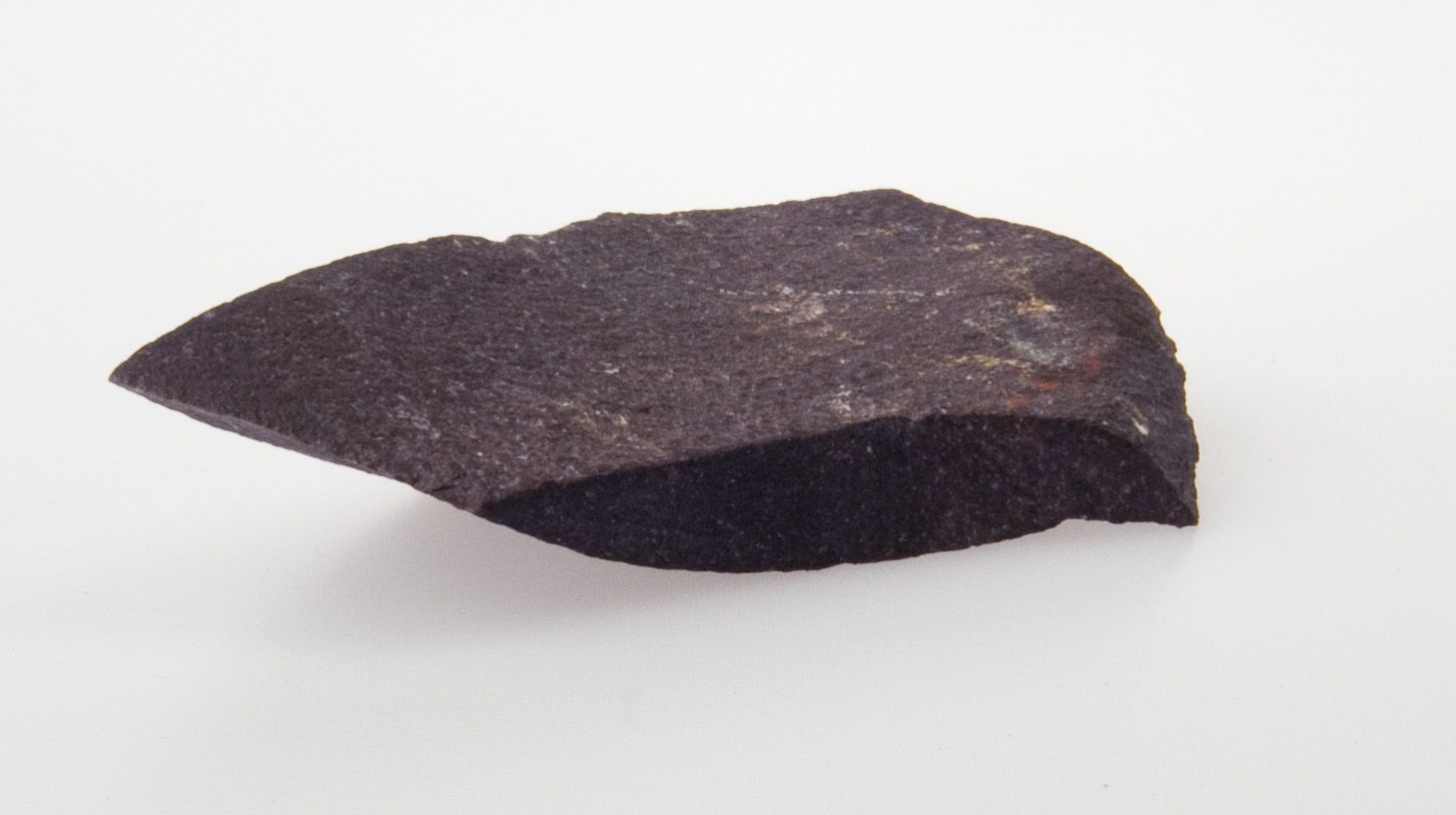
Specimen of an augite-porphyry mineral from a quarry in the Lori province of Armenia that is the source of Rublev Colours Armenian Purple Ocher pigment and Purple Ocher Artists Oil
The first mention of purple ocher in English literature is found in John Hill’s Natural History (1748) in the section of red ochers: Friable, purple, alkaline Ochre, the Almagara of the Moderns, and Sil Atticum of the Ancients; Hard, heavy, purple Ochre; Fine, light, purple Ochre; and Fine, heavy, purple Ochre, called Rubrica Sinopica. He distinguishes the types of purple ochers by their color, mass, and texture. He associates several types with the ancient names of earth pigments, sil, sinopis, and rubrica, described by ancient writers Theophrastus, Dioscorides, and Pliny. Although classed as purples in the eighteenth and nineteenth centuries, these purple pigments are called red ochers today.
The nineteenth-century chemist and colorman George Field mentions purple ocher or mineral purple as an earth found in the Forest of Dean in Gloucestershire. Today, this mineral deposit is still in existence. Field describes the pigment as a ‘murrey’ or chocolate color that ‘forms cool tints of a purple hue with white.’ (Field 1841) Murrey is a deep purplish red color like the ripened mulberry fruit. Field also differentiates purple ocher from a darker colored pigment, Indian red, which was also classed among purples. (Field 1869)
Purple ochers are dark red earth pigments with a cool or bluish bias and, when tinted with white, produce subtle shades of violet. Although most of their color strength comes from red iron oxide, they owe some of it to the presence of manganese compounds. Pure sources of dark red iron oxide pigments are near Málaga, Spain, and on the island of Hormuz in the Persian Gulf, which remains industrially essential today. Other historical sources of red earth pigments are Capadoccia in central Anatolia, Armenia, Verona, Forest of Dean in Gloucestershire, and the Luberon mastiff in Provence.
Rublev Colours Purple Ocher
Recently, we obtained a deep red earth pigment from the Lori province of Armenia. This pigment produces the most delicate tints of purple when mixed with white. The pigment works well in all mediums, but we were immediately stunned by the color it produces in oil. It harmonizes perfectly with other earth colors of Rublev Colours Artist Oils and is impossible to reproduce by mixing other colors. This month, we added Rublev Colours Purple Ocher Artist Oil, which has a deep red masstone and subdued purple tints. It is a workable paste color ground in linseed oil with moderate to low oil content and a long, slightly thixotropic body. Being an iron oxide, it is absolutely lightfast and is compatible with almost all other pigments on the palette.
Rublev Colours Purple Ocher mixed with black or blue furnishes, grays, and chocolates and is most invaluable in neutralizing greens. We believe it will make an excellent addition to any palette and become a principal color in creating cool tints in flesh tones and landscapes.
Rublev Colours Armenian Purple Ocher Pigment


| Pigment Information | |
| Color: | Purple |
| Colour Index: | Pigment Red 102 (77491) |
| Chemical Name: | Iron Oxide |
| Chemical Formula: | α-Fe2O3 |
| Chemical Composition | |
| SiO2: | 58.67% |
| Al2O3: | 17.06% |
| Fe2O3: | 11.22% |
| MgO: | 0.12% |
| CaO: | 0.59% |
| ASTM Lightfastness Rating | |
| Acrylic: | I |
| Oil: | I |
| Watercolor: | I |
| Properties | |
| Bulk Density: | 0.56 g/cm3 |
| Oil Absorption: | 35 g/100 g |
| Particle Size: | 0 to 15 microns: 80-85% 16 to 29 microns: 15-20% 30 microns and above: 0.1% |
| Residual (Mesh 325): | <0.1% |
| pH: | 8.5 |
| Thermal Color Stability: | <850 °C |
Rublev Colours Purple Ocher Oil Paint


| Purple Ocher | |
| Color: | Purple |
| Binder: | Linseed oil |
| Additive(s): | None |
| Pigment Information | |
| Pigment: | Armenian Purple Ocher |
| Pigment Classification: | Natural inorganic |
| Colour Index: | Pigment Red 102 (77491) |
| Chemical Name: | Natural Iron Oxide |
| Chemical Formula: | Fe2O3 |
| CAS No. | 1309-37-1 37338-85-5 |
| Properties | |
| Code: | 702 |
| Series: | 3 |
| Opacity: | Semi-Opaque |
| Tinting Strength: | Average |
| Drying Rate: | Medium |
| ASTM Lightfastness: | I |
| Permanence: | A - Permanent |
| Safety Information: | No acute or known chronic health hazards are associated with this product's anticipated use (most chemicals are not thoroughly tested for chronic toxicity). Protect yourself against potentially unknown chronic hazards of this and other chemical products by keeping them out of your body. Do this by avoiding ingestion, excessive skin contact, and inhaling spraying mists, sanding dust, and vapors from heating. Conforms to ASTM D-4236 |
For a detailed explanation of the terms in the table above, please visit Composition and Permanence.
Note: The scan of the “drawdown” (above) contains a pre-mixed paint film of 6 mils (0.006 inches) thickness applied to a standard test card to examine color consistency, opacity, and other qualities. The drawdowns show the full-color strength (mass tone) on the left and mixed in a 1:2 ratio with titanium white on the right. The bottom area of the drawdowns is scraped to show undertones.
References
Cassell (1873) Cassell’s Household Guide. London: Cassell, Peter & Galpin, p. 320.
George Field (1841) Chromatography; Or, A Treatise on Colours and Pigments: And of Their Powers in Painting. London: Tilt and Bogue, p. 249.
George Field (1869) Field’s Chromatography; Or a Treatise on Colours and Pigments as Used by Artists. Thomas Salter, Editor, London: Winsor & Newton, p. 299.
Abraham Rees (1819) The Cyclopædia: Or, Universal Dictionary of Arts, Sciences, and Literature, Volume 32. London: Longman, Hurst, Rees, Orme & Brown. See SIL.
(1764) A New and Complete Dictionary of Arts and Sciences: Comprehending All the Branches of Useful Knowledge, with Accurate Descriptions as Well of the Various Machines, Instruments, Tools, Figures, and Schemes Necessary for Illustrating Them, as of the Classes, Kinds, Preparations, and Uses..., Volume 4, 2nd Edition. London: W. Owen, p. 2812–2813.
John Hill (1748) A General Natural History Or, New and Accurate Descriptions of the Animals, Vegetables, and Minerals, of the Different Parts of the World: With Their Virtues and Uses. London: Thomas Osborne, p. 57–58, 60–61.
Emanuel Mendes da Costa (1757) A Natural History Of Fossils, Volume 1. Davis and Reymers, p. 93–94.
Where to Buy
Shop Now for
Shop Now for
Shop Now for
Frequently Asked Questions
What is Purple Ocher?
Purple Ocher is a unique earth pigment derived from hematite, offering artists a rich, earthy hue ranging from reddish purple to more subtle violet tones.
How is Purple Ocher made?
Purple Ocher oil paint is made from pure natural ground hematite, ensuring a high-quality, lightfast, and semi-opaque pigment. The pigment is then ground in aged, refined linseed oil without modern additives to a smooth consistency.
Is Purple Ocher lightfast?
Yes, Purple Ocher is absolutely lightfast, meaning it won't fade when exposed to light.
How does Purple Ocher differ from other red iron oxide earths?
Purple Ocher's reddish-purple hue is cooler than other red iron oxide earths like Venetian red or Sartorius red.
Can I mix Purple Ocher with other colors?
Absolutely! Purple Ocher creates subtle violet tints when mixed with white, but it also exhibits beautiful transitions when combined with colors like cadmium yellow, ultramarine blue, and alizarin crimson.
What medium is best for thinning Purple Ocher oil paint?
Purple Ocher is versatile. For transparency and a purple lake hue, you can mix it with oil or another painting medium sufficiently thinned or apply it thinly over white substrate.
How does the pigment in Purple Ocher paint mix with lead white?
When mixed with lead white, Purple Ocher transforms into a distinct tint, different from its thinly painted transparent state, and warmer than mixtures with titanium white. This shift is dramatic, emphasizing the versatility of the pigment.
What is the consistency of the Purple Ocher oil paint?
Purple Ocher has a thick, and rich consistency with a slight texture. It brushes out easily but also holds its shape remarkably well, providing both flow and form.
Are there any additives in the Purple Ocher oil paint?
No. Purple Ocher is ground in linseed oil without any stearates, wax, or other additives that might alter the pigment's behavior in oil.
Where is hematite, the primary component of Purple Ocher, found?
Hematite is a mineral form of iron(III) oxide and can be located in various places across the earth. It's a principal source of iron oxide earth pigments and is often derived from soft, red, earthy masses known as 'paint ore.'



